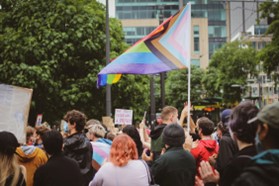Pride has been a celebration of LGBTQ+ lives for half a century filled with color, diversity, and unity. It has inspired pride movements around the world that continue to be a safe space for queer folks to celebrate their true identity. This is truly a happy occasion that is essential to defending and sustaining the LGBTQ+ movement.
Let’s take a closer look at the history of pride.
Institutionalized Homophobia Spurs the LGBTQ+ Movement
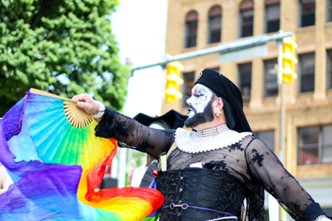
In 1787, New York state had adopted the sodomy laws which held that sexual instinct is only natural for the opposite sex. It punished sodomy by death, which was later reduced in 1801 to imprisonment for life. In 1828, it was further reduced to 10 years of the maximum sentence. This continued until 2003 when the Supreme Court ruled the sodomy laws unconstitutional.
Homophobic and transphobic laws were a part of New York’s institutions for centuries. They led to widespread homophobia, hate crimes, violence, and aggression against the LGBTQ+ community. It started to become even more oppressive during the 1950s and 1960s. The anti-LGBT+ movement started spreading, taking a toll on any person who wasn’t straight and/or cisgender. Homophile movements started gaining momentum throughout the country, leading to greater fear among queer community members.
And yet, by 1969, New York City continued to cement itself as an international center for queer culture, even if it was underground. Queer culture moved to secret bars, drinking establishments, and safe houses that sheltered and spread the queer movement. These liberal and gay pockets of New York continued their fight against homophobic legal, social, and political movements. For example, the eastern side of Jacob Riis Park, which was hard to reach, became the unofficial gay beach of the city.
Being openly queer during the day was never an option due to oppressive laws; hence, nightlife continued to grow. One such establishment was the Stonewall Inn, which was once backed by the mafia but then turned into a popular underground gay bar in 1966. It continued to thrive despite regular raids by the police. Here is where the NYC pride truly took off.
Stonewall Inn: An Iconic Gay Bar Resulting in an International Movement
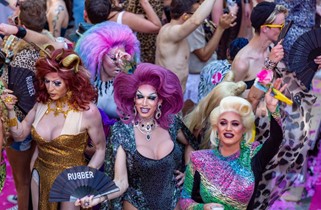
One regrettable Saturday night in the Stonewall Inn during the 1969 summer, the New York police raided the bar once again. However, things didn’t quite go as planned. Patrons, distraught by the oppression, stood up against the police brutality and arrests for the first time. Violence followed. Within hours, the police were driven out of the bar, but the momentum for the queer movement continued.
In the following weeks, riots and demonstrations didn’t seize. Hundreds of queer folks gathered in New York, resulting in widespread coverage from the press too. These Stonewall riots were iconic in galvanizing the LGBTQ+ movement. It marked the queer movement emerging from the underground establishments into the light, with thousands fighting against homophobia.
Pride Movements That Followed
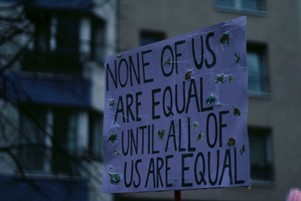
A year after the Stonewall Riots, in 1970, New York City hosted its first Gay Pride March that the Christian Street Liberation Day Committee organized. It commemorated the Stonewall Riots. Some Annual Reminders had been organized before in Philadelphia, but this was the first pride march where protesters came together for gay rights. It was large enough to fill up 15 blocks around the city.
The pride movement is more than just the annual march in June, though. The disco era of New York was also a marker for modern arts, activism, and open acceptance. It invited queer individuals from all over the nation to come to the Big Apple in celebration, which led to all the gay neighborhoods and establishments around the city. The eighties also introduced gay coffee shops, book shops, ballrooms, and big hair.
By 1984, the NYC pride movement had grown to other parts of the country, with parades and marches occurring everywhere. Finally, the Heritage of Pride took over the pride march too. In 1898, an aid coalition called Act Up also led a protest at St. Patrick’s Cathedral. The 5,000 people gathered to protest against the public stance of the Roman Catholic Archdiocese against condom distribution and AIDS education as well right to abortion for women. They advocated safe sex policies for teens, while a hundred protestors also disrupted the live mass being held there (they were arrested for this).
The Heritage of Pride changed the name of the Christian Street Festival to Pride Fest after the Don’t Ask, Don’t Tell bill was passed in 1993.
Spread of LGBTQ+ Culture
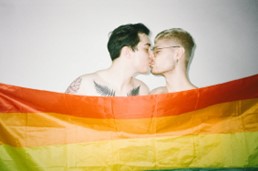
By the 1990s, queer culture became synonymous with New York’s identity. The best clubs and bars celebrated gay culture. Gay folks ruled the fashion, retail, Broadway, entertainment, and literacy scene of NYC. LGBTQ+ folks were embraced, celebrated, and even revered.
By 2000, Stonewall Inn was classified as a National Historic Landmark due to its significance for the queer movement in New York. In 2016, President Obama also federally protected the seven acres of land around the inn, after which the Stonewall National Monument was created.
In 2015, the Supreme Court struck down the same-sex marriage ban, which finally led to marriage equality in the country. Even though it was much later than many countries over the world, it was a historic and widely celebrated bill in the US.
In Conclusion
New York was a city where queer culture thrived in every way. It gave ground to an international movement that has bought safety, equality, and much-needed rights for LGBTQ+ people. The NYC history of pride is important to study because it spurred a national gay rights movement.
Angelina Valentin, LCSW-R
Angelina offers counseling services and has worked with clients from all sorts of backgrounds welcoming clients of all sexualities, genders, races, and more. Angelina runs the Q Therapy podcast when not meeting with clients to offer free mental health awareness and education on LGBTQ+ related matters.
